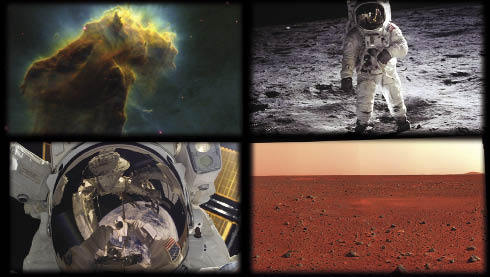Your personal Tumblr journey starts here
Memoryfoam - Blog Posts
10 Out of this World NASA Spinoff Technologies
What is a spinoff? Great question! A NASA spinoff is a technology, originally developed to meet our mission needs that has been transferred to the public and now provides benefits as a commercial product or service. Basically, we create awesome stuff and then share it with the world. Here’s a list of just a few NASA spinoff technologies (in no particular order):
1. Enriched Baby Food

While developing life support for Mars missions, NASA-funded researchers discovered a natural source for an omega-3 fatty acid that plays a key role in infant development. The ingredient has since been infused in more than 99% of infant formula on the market and is helping babies worldwide develop healthy brains, eyes and hearts.
2. Digital Camera Sensors

Whether you take pictures and videos with a DSLR camera, phone or even a GoPro, you’re using NASA technology. The CMOS active pixel sensor in most digital image-capturing devices was invented when we needed to miniaturize cameras for interplanetary missions.
3. Airplane Wing Designs

Did you know that we’re with you when you fly? Key aerodynamic advances made by our researchers - such as the up-turned ends of wings, called “winglets” - are ubiquitous among modern aircraft and have saved many billions of dollars in fuel costs.
4. Precision GPS

Uncorrected GPS data can be off by as much as 15 meters thanks to data errors, drift in satellite clocks and interference from Earth’s atmosphere. One of our software packages developed in the 1990s dials in these locations to within centimeters, enabling highly accurate GPS readings anywhere on the planet. One of our most important contributions to modern society, precise GPS is used in everything from personal devices and commercial airplanes to self-driving tractors.
5. Memory Foam

Possibly the most widely recognized spinoff, memory foam was invented by our researchers looking for ways to keep its test pilots and astronauts comfortable as they experienced extreme acceleration. Today, memory foam cushions beds, chairs, couches, car and motorcycle seats, shoes and even football helmets.
6. International Search and Rescue System

We pioneered the technology now used internationally for search and rescue operations. When pilots, sailors or other travelers and adventurers are stranded, they can activate a personal locator bacon that uses overhead satellites to relay their call for help and precise location to authorities.
7. Improvements to Truck Aerodynamics

Nearly every truck on the road has been shaped by NASA - literally. Agency research in vehicle aerodynamic design led to the curves and contours that help modern big rigs cut through the air with less drag. Our contributions to truck design have greatly reduced fuel consumption, perhaps by as much as 6,800 gallons per year for an average vehicle.
8. Shock Absorbers for Buildings and Bridges

Shock absorbers originally designed to survive the extreme conditions of space shuttle launches are now bracing hundreds of buildings and bridges in earthquake-prone regions all over the world. None of which have suffered even minor damage during an earthquake.
9. Advanced Water Filtration

We have recently discovered sources of water on the moon and Mars, but even so space is still practically a desert for human explorers, and every drop possible must be recycled and reused. A nanofiber filer devised to purify water in orbit is currently at work on Earth. From devices that supply water to remote villages, to a water bottle that lets hikers and adventurers stay hydrated using streams and lakes, our technology is being utilized.
10. Invisible Braces

A company working with NASA invented the translucent ceramic that became the first invisible dental braces, which would go on to become one of the best-selling orthodontic products of all time.
So, now that you know a few of the spinoff technologies that we helped develop, you can look for them throughout your day. Visit our page to learn about more spinoff technologies: https://spinoff.nasa.gov
Make sure to follow us on Tumblr for your regular dose of space: http://nasa.tumblr.com